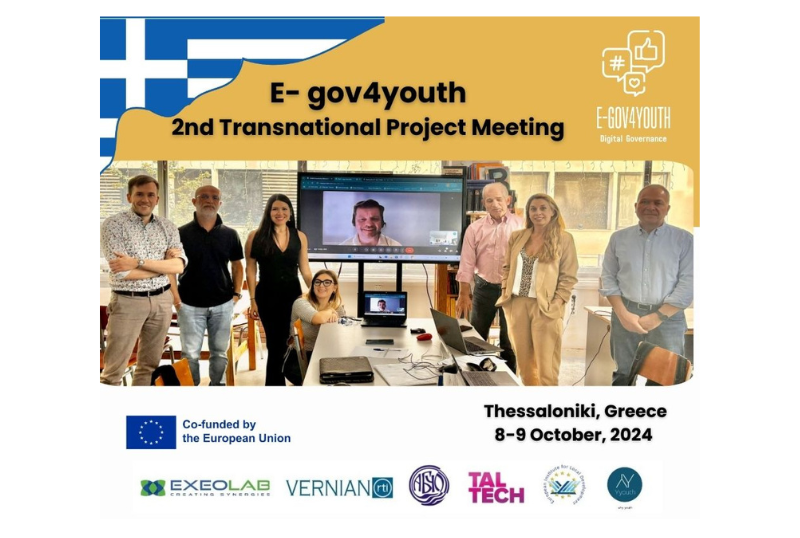
The second TPM of EGov4Youth has just concluded, held at the European Institute for Local Development in Thessaloniki.
Six months after the project’s start, all international partners from Italy, Norway, Greece, Estonia, Bulgaria, and Cyprus gathered for a crucial moment of collaboration. This meeting marked the official launch of the activities for Work Package 3 (WP3) and served as an opportunity to exchange ideas, opinions, and reflections on the project’s progress.
Particular focus was placed on creating a training program aimed at highly qualified NEET (Not in Education, Employment, or Training) youth aged between 24 and 29, developed based on the results of Work Package 2 (WP2). The project involves the participation of 60 young individuals, with the goal of providing them with a transnational training experience focused on mobility in Estonia.
The main objective of the EGov4Youth project is to develop a tailored training pathway for NEET youth, concentrating on E-Government and related areas. This program emphasizes digital technologies, civic participation, transparency, security, and local development.
The training program will be structured into six modules, covering various topics, including E-Governance, Technological Tools, Civic Participation, and Open Data, following a mixed methodology that adheres to Youthpass criteria to ensure participants receive a high-quality educational experience.
Additionally, the materials used will be dynamic and interactive, with a strong focus on practical learning through games and group activities, making the training experience as engaging as possible for participants.
During the meeting, partners also had the opportunity to monitor the project’s progress through key indicators, including the number of young people involved, participation from external guests, inclusion of representatives from public administrations, and analysis of participant satisfaction levels.
Stay tuned for further updates!

